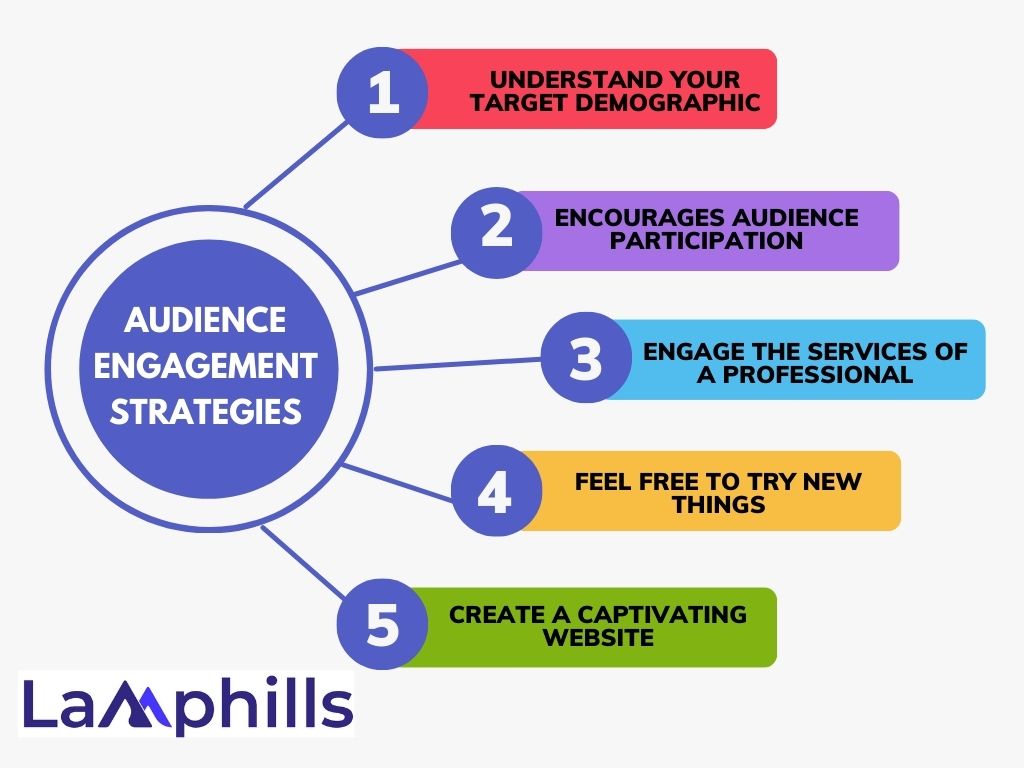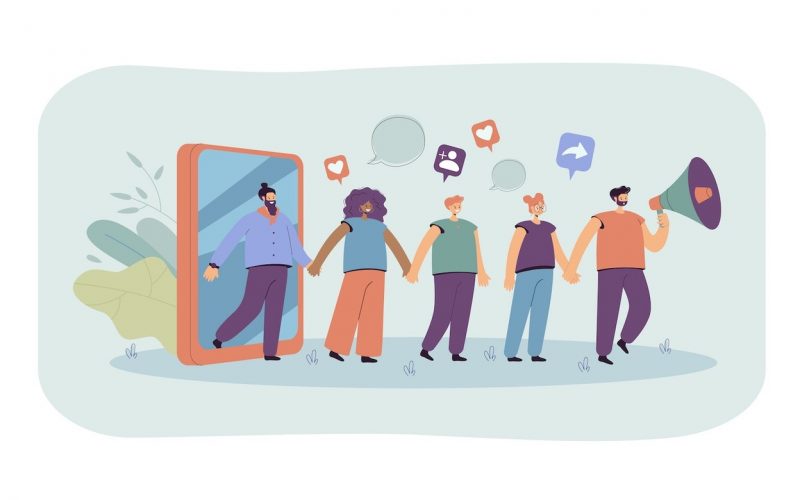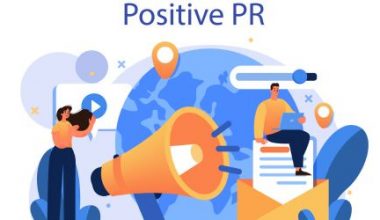Having experience in various industries, ranging from dynamic tech startups to the regulated world of financial services, I have always been fascinated by the art of captivating an audience. Mastering the art of captivating and engaging an audience, no matter the platform or medium, has been a fundamental aspect of my professional journey. However, accurately defining and measuring audience engagement continues to be a challenging task.
According to a recent study conducted by Microsoft, it has been discovered that our attention spans have decreased to just eight seconds, which is actually shorter than the attention span of a goldfish! This statistic emphasizes the importance of creating compelling content and implementing strategies to engage with the audience.
Here, we’ll delve into some frequently ignored strategies to turn your audience from passive onlookers to engaged participants, enhancing their involvement and ensuring your message strikes a chord.
What Does Audience Engagement Mean?
Audience engagement refers to the enthusiastic and interactive participation of a group of individuals during a live presentation. When the presenter successfully captures and maintains the interest, attention, and active participation of the audience during the presentation, audience engagement truly comes to life.
Attention is a highly prized asset in any presentation, particularly in the realms of business and education. Ensuring the audience remains engaged is crucial.
Effective presenters captivate their audience from the very beginning and maintain their attention throughout the entire presentation. During the initial moments, your goal is to captivate and hold the audience’s attention by persuading them that the topic is fascinating and deserving of their time.
Key Takeaways
- Audience engagement is critical for ensuring that a presentation or brand message not only captures but also maintains the attention and interaction of viewers or consumers.
- Various engagement strategies on social media, such as likes, comments, shares, and website clicks, demonstrate different levels of audience interaction, from passive to active engagement.
- Effective audience engagement strategies include understanding and targeting specific demographic segments, aligning engagement tactics with organizational goals, and regularly updating content strategies to remain relevant.
- Employing professionals who specialize in social media and audience analytics can significantly enhance a brand’s engagement efforts by leveraging expert insights and innovative content approaches.
- Utilizing a structured Audience Engagement Template helps streamline the strategy process, ensuring all aspects of engagement—from content creation to feedback analysis—are systematically addressed.
Types of Audience Engagement
There are numerous ways that audiences can interact with your brand on social media. There are various levels of engagement, ranging from effortless to more complex. Here are a few examples of popular audience engagement strategies:
#1. Likes and Reactions
Engaging with your brand on social media becomes effortless for your target audience when they can simply click or tap a button to express their likes and reactions. However, when your audience engages with your content, their followers will also see it in their feeds, resulting in a significant boost to your brand’s visibility. Understanding the significance of likes and reactions is crucial when evaluating the performance of your content.
#2. Reviews and Mentions
Understanding and engaging with your brand requires more than just clicking a like or share button on your social media posts. It indicates that your audience is actively participating in a discussion about your brand. They have a strong enthusiasm for their work and are eager to share it with others
#3. Comments and Replies
Just like reviews and mentions, comments and replies indicate that your target audience is interested in having a conversation about your brand. They can engage with you by replying to your brand’s posts or commenting on another post related to your brand. Regardless, they have a thought they’re eager to share with others.
#4. Shares and Resharing
Sharing and resharing brand content appears to be a straightforward method of engaging with the audience. Nevertheless, the situation is more intricate than it may seem. When your audience shares or reshares your content, they are actively engaging with it, going beyond simply consuming it.
#5. Website Engagements
When your target audience clicks through a link to your website from a social post, it indicates their genuine interest in learning more about your brand. They were impressed by what they saw on social media and were interested in hearing more from you.
Why Is Audience Engagement Crucial For Your Content Strategy?
Understanding the importance of audience engagement is crucial, as your brand operates within a larger context. No digital marketing strategy or social media strategy can be successful without it. Take a look at the various ways audience engagement can greatly benefit your brand:
#1. Build stronger customer allegiance
When your audience engages with your brand, particularly on multiple occasions, they are more inclined to remain loyal in the long run. Your target audience perceives your brand as empathetic and attuned to their needs, fostering a sense of loyalty. Your audience will have the opportunity to discover your company’s mission, vision, and core values, and understand how they resonate with their own beliefs. This strengthens their bond with your brand.
#2. Increase your online presence
Just a heads up, social media algorithms tend to boost the visibility of your social posts when they receive higher audience engagement. It signals to the social platform that your content is engaging and likely to be of interest to others. By boosting audience engagement, you also enhance the visibility of your brand to new audiences.
#3. Obtain feedback
Monitoring audience engagement allows you to gain valuable insights into the perception of your brand among your target audience. If there is a lack of engagement with your content, it may indicate that your posts are not resonating with your followers. You should consider revisiting your approach and identifying any areas that may need improvement.
If people engage positively by commenting, sharing, or liking your post, it’s a good sign that you’re on the right track. When encountering negative comments, it is important to carefully analyze the feedback to identify the root cause of the problem. Using social listening tools such as Sprout, brands can effectively identify and address important issues, ranging from customer service delays to product defects and beyond.
#4. User experience
When your brand captures the attention of your audience, they actively engage with you by liking, sharing, commenting, clicking, and more. By taking these actions, you can gain valuable insights to customize your content and enhance the user experience.
Developing And Monitoring Methods To Enhance Audience Engagement
It is important to create a marketing plan that effectively captures the attention of both existing customers and potential new customers. Thankfully, there are numerous effective strategies to ensure continuous engagement with your brand.

Here are five strategies that experts recommend for increasing and monitoring audience engagement.
#1. Understand your target demographic
Engaging the audience is a crucial aspect of marketing. Understanding your current customers and identifying your target audience is crucial for building a strong brand presence. Who is your target audience? Who is your target audience for brand promotion? Has your target demographic shifted?
#2. Utilize active participation to successfully accomplish organizational objectives
Depending on the size of your business, the marketing and communication departments may operate independently. However, it is crucial to always have meetings focused on revenue generation.
“Ensuring that your audience engagement initiatives are in line with your company’s overarching objectives is crucial,” emphasized Elizabeth Riley Boyer, who previously held the position of vice president of marketing and communications at ThinkCERCA, a literacy courseware company.
She suggests using the OKR framework. Companies like Google, Intel, and other major corporations use the term “OKR” to refer to company objectives and measurable key results. Every objective needs to be in line with the company’s mission, values, and vision statement. Key results are identified to help employees collaborate and achieve the objectives.
Make sure your engagement strategy is in line with your brand image, in addition to meeting revenue goals. According to media marketing expert Tony Tran, the strategies that Wendy’s, Starbucks, and Nike employ are completely unique to each brand.
Ensure that your engagement is educational, supportive, or humorous while maintaining consistency. It is important to align your engagement with your company image and promote your goals.
#3. Engage the services of a professional
On a typical day, I keep a close eye on the performance of various links across social media platforms and analyze the open rates of marketing emails for the organization.
That’s why I suggest hiring a specialized professional with expertise in social media for business. I leverage analytics and compelling visuals to effectively market on Instagram, ensuring optimal client satisfaction.
Managing digital strategy can feel like a never-ending task that can easily become overwhelming. Small business owners should consider hiring someone who is well-versed in the digital world, can respond promptly, and is willing to explore new strategies and content ideas.
Nevertheless, given the public accessibility of social media, anyone with expertise can excel in this field, regardless of their industry background. Their ability to engage an audience can be reflected in their following and content.
#4. Feel free to try new things
The landscape of digital media is ever-evolving, with platforms such as Instagram, Twitter, and Facebook continuously introducing fresh analytics features and engagement tools. Explore different strategies on your digital platforms and marketing emails to discover the most effective approaches.
It’s important to avoid getting too caught up in the idea of how your brand should sound, as this could cause you to lose your distinct voice. A tone that focuses too much on promoting can make content feel less relatable.
Authenticity holds great significance for new companies in the early stages of shaping their identities. “Many people believe that social media should be more straightforward,” Ochoa added. Don’t hesitate to be authentic. That’s how individuals will develop a sense of connection with you and be inclined to become your followers!”
When utilizing a CRM solution for your business, the integrated CRM analytics tools can provide valuable audience insights, as well as valuable customer service and sales insights.
#5. Create a captivating website
Stoney deGeyter, the president of Pole Position Marketing, shared some valuable insights on how to boost audience engagement with your website:
- Ensure that your website loads quickly for optimal user experience. Many people tend to overlook the importance of website speed in their website design. DeGeyter emphasized the significance of having a website that loads quickly and operates efficiently.
- Ensure that your website is optimized for mobile devices. Ensuring mobile-friendliness is crucial in today’s digital landscape, where mobile and social media shopping are on the rise. Create a visually appealing website that is optimized for seamless viewing across various devices, including phones, tablets, and computer screens.
- Create a compelling landing page that captures attention and drives conversions. Provide a variety of choices on the website landing page to guide your visitors towards their preferred destinations.
By implementing these strategies, you can greatly improve the chances of visitors spending more time on your website. This will not only boost engagement but also give you more chances to track and analyze their interactions. Make sure to include clear calls to action (CTAs) that will effectively guide customers and prospects through your sales process.
Strategies for Engaging with Today’s Audience
What strategies can be implemented to ensure that your audience consistently engages with and interacts with your social media posts? Here are a few strategies we recommend for you to try.
#1. Utilize the power of visual storytelling
Posts that include visuals such as graphics, videos, and photos tend to receive more positive responses from users. However, it is crucial to carefully select the video and image content from your library. Ensure that the visuals effectively communicate the brand’s identity to your target audience, even without the presence of a logo or brand name.
Chanel’s Instagram account showcases a captivating display of visual storytelling. The visuals have such a consistent style that they are easily recognizable by any Chanel enthusiast as being affiliated with the brand.
#2. Share customized content
Generic content doesn’t elicit much of a response from social media users. They are only interested in content that aligns with their personal preferences, including hobbies, interests, values, and other defining characteristics. Create compelling content that is customized for different segments of your audience. Personalizing content is a highly effective strategy for engaging your audience as it demonstrates a deep understanding of their needs.

In this example, Nike targets soccer enthusiasts by incorporating a dedicated hashtag and customizing the text and visuals to resonate with soccer players.
#3. Ensure prompt and timely responses
If you’re looking to boost audience engagement, it’s important to remember that social media is more than just a one-way communication tool. Being attentive to user comments, reviews, shares, and other forms of engagement allows your brand to effectively handle any concerns, establish connections with customers, and cultivate loyalty.
As a marketing coordinator, Coca-Cola ensures prompt responses to all user posts regarding their brand, regardless of the sentiment, to ensure their audience feels acknowledged.

#4. Connect with influential individuals
Utilizing influencer marketing can be a valuable strategy to connect your brand with highly engaged audiences, expanding your reach and engagement. These influencers have a loyal social media following who highly regard and trust their opinions. When an influencer endorses your brand, their audience perceives it as a type of social validation.
Zoe Sugg has a massive following of 9.2 million people and is known for her influence in the lifestyle industry. She frequently shares updates about the products and services she incorporates into her daily routine, believing they will resonate with her followers.

#5. Create a thriving community
Build an online community where your target audience can come together and engage with others who share their interests. Online communities, such as forums and private groups, enhance the bond between your audience and your brand by introducing them to like-minded individuals within these communities. As an illustration, The Arboretum, Sprout’s online community, acts as a hub for 10,000 social and marketing professionals to come together for assistance, inspiration, inquiries, and industry news.

#6. Harness the power of content created by users
There’s no more effective way to captivate your audience than by incorporating their content into your social media posts. Consider engaging with the original post by reacting or resharing it. Alternatively, encourage users to generate content in response to a designated prompt and distribute their submissions across your social media platforms. User-generated content creates a sense of belonging for your audience, allowing them to share their experiences and feel connected to the brand.
For example, Away leverages content generated by loyal customers of the brand. This creates a sense of exclusivity for Away’s audience, while also offering social validation for potential customers.
#7. Incorporate interactive elements
Several social channels offer interactive features, including quizzes and polls. These strategies can be instrumental in boosting audience engagement and soliciting valuable feedback. Just engage your audience by posing a question and providing a few options for them to consider. By providing your audience with a voice, you demonstrate that you are actively listening to their needs.
24 Seven Talent effectively utilizes LinkedIn polls by engaging their audience with questions that resonate with their interests.

#8. Consider implementing contests
Occasionally, your audience may require a little extra motivation to interact with your brand on social media. Hosting a contest is an excellent method to reward their participation with an enticing prize. There are various ways to participate in a social media contest, such as liking or commenting on a post, tagging a friend, or creating a video or photo entry.
Check out this post for a giveaway contest from Nuba. It invites followers to enter by completing various actions, such as liking the post and tagging their friends. These strategies enhance brand visibility and encourage greater engagement.

Template for Audience Engagement
For professionals who want to streamline their audience engagement strategy, using an Audience Engagement Template can be extremely advantageous. This template should include:
- Understanding your audience: Essential questions to uncover demographic and psychographic factors.
- Content Strategy: Providing guidelines for the type of content, tone, and delivery channels.
- Engagement Tactics: Strategies to boost interaction and foster greater engagement.
- Measurement and Adaptation: Utilizing tools and methods to effectively measure engagement and establish feedback loops to make strategic adjustments based on performance.
You can use our free audience engagement template below;
Utilizing a template ensures that every aspect of your engagement strategy is accounted for and offers a systematic approach to crafting meaningful interactions.
Summary
The path to audience engagement is a continuous and constantly changing process. By utilizing effective strategies, utilizing the right tools, and tapping into your creative side, you can turn passive onlookers into active participants who not only show interest in your content but also eagerly engage with it and spread the word. Isn’t it about time you took a fresh look at your strategy to make sure you’re not only connecting with your audience but also captivating them?
What actions will you be taking today to improve your audience engagement?
Related Articles
- Corporate Communications: Strategies to Amplify Your Brand’s Message
- Social Media Etiquette: Best Practices
- What Does Evergreen Mean In Business? Timeless Tactics for Lasting Growth
- Best 8 Content Creation Agency in Nigeria 2024






